How To Grow Your Money: 21 Best Investments in the Philippines for Any Age or Income

An investment is a means to build wealth over time, protect your money from inflation, provide passive income, and reach your financial goals faster. To find the ideal investment, formulate your criteria and match it with the available investment products.
There are so many factors and investment options to evaluate that it might be overwhelming to decide where to best put your hard-earned money.
Should I start investing with a small amount or risk a bigger sum to maximize earnings? Is a fund manager worth it? Can I manage my portfolio? Is investing in stocks better than real estate?
Whether you’re just starting your investment journey or on the hunt for your next venture, this article will guide you in choosing the best investment based on your budget, risk profile, age, and investment goals.
DISCLAIMER: This article is for informational purposes only and should not be considered professional financial investment advice. The author and FilipiKnow are not affiliated with any of the companies mentioned herein and have held no positions in any of the investments at the time of publication.
Table of Contents
- First Things First: Your Investing Risk Tolerance
- Best Investments in the Philippines for Conservative Investors
- Best Investments in the Philippines for Moderate Investors
- Best Investments in the Philippines for Aggressive Investors
- How To Choose the Right Investment for You
- How To Start Investing
- Tips and Warnings
- Frequently Asked Questions
- 1. Which should come first: investment, emergency fund, or paying off debts?
- 2. Do I have to be debt-free and maintain a fully-funded emergency fund before I can start investing?
- 3. How do I start investing if I do not have enough funds?
- 4. What is the best investment option for beginners?
- 5. Is there a preferred time or day to trade in the market?
- References
First Things First: Your Investing Risk Tolerance

Before you start investing, you need to figure out your risk profile. Determine your risk tolerance or the level of uncertainty you can handle when making an investment decision. This does not only mean how much risk you are willing to take in exchange for potential profit but also the number of losses you can withstand from the volatility of an investment. Your age, financial capacity, and savings goal can influence your risk tolerance.
Individuals nearing or past retirement age may be keen to invest in low-risk and short-term debt instruments to protect the value of their money and beat inflation. On the other hand, younger individuals who have more opportunities to earn more have the luxury of time to ride out market volatility and wait for higher long-term gains.
In terms of financial capacity, wealthier investors can afford to explore more investment vehicles and build a diversified portfolio to minimize risks. They prefer to invest in long-term assets as liquidity is not a concern for them, and they can withstand temporary losses in the hopes of huge returns in the long run.
Your savings goal includes the purpose, costs, and time frame. Goals you want to achieve in less than 3 years can be considered short-term (ST), 3 to 10 years are medium-term (MT), and those that will take you more than 10 years to attain are deemed as long-term (LT). The time duration of your financial goal should match the investment horizon to maximize the investment and reach your target.
A person’s level of risk tolerance can be classified as conservative, moderate, and aggressive.
1. Conservative Investors
These investors prioritize the preservation of capital over appreciation. They prefer liquid or stable investments that provide guaranteed returns and minimize losses. Their portfolio usually consists of safe or minimal risk investments which consequently produce low returns compared to riskier investments.
2. Moderate Investors
Investors under this category value both capital preservation and growth. They invest in instruments with considerable risks and accept short-term losses to gain modest returns in the long term. This allows them to earn more than conservative investors when the market is doing well and not endure as much loss as aggressive investors when the market dips.
3. Aggressive Investors
Aggressive investors are comfortable taking substantial risks to maximize long-term returns. They are usually seasoned investors with an extensive portfolio and can tolerate the high volatility of the market. They are willing to take significant losses in exchange for huge potential rewards in the long run.
Best Investments in the Philippines for Conservative Investors
| Investment Product | Minimum Initial Capital | Average Return | Time Horizon |
| High-Yield Savings Account | ST, MT, LT | ||
| a. Traditional Banks | ₱30,000 to ₱1M | Up to 1.66%1 p.a. | |
| b. Digital Banks | none | Up to 4.5%2 p.a. | |
| Time Deposit | ST, MT | ||
| a. Traditional Banks | ₱1,000 to ₱100,000 | Less than 1%3 to 4.19%4 p.a. | |
| b. Digital Banks | ₱5,000 | 6%5 p.a. | |
| Government Bonds | ₱5,000 | 1.25% to 6%6 | ST, MT, LT |
| Corporate Bonds | ₱5,000 to ₱100,000 | 1.7% to 5.2%7 | ST, MT, LT |
| Pag-IBIG MP2 | ₱500 | 6%8 | MT |
| PESO | ₱1,000 | 1.85% to 3.75%9 | MT, LT |
| Money Market Fund | ₱5,000 | 2.37%10 | ST |
| Cooperatives | ₱100 to ₱1,000 | Based on the performance of the Coop | ST, MT, LT |
1. High-Yield Savings Account

Investing in a high-yield savings account lets you earn more than a regular savings account. Your current bank may already have this financial product wherein an increasingly higher interest rate is given when a specified average daily balance is reached for a fixed period. Some banks also give a bonus interest if no withdrawals are made for a month.
To enjoy even higher interest rates, consider opening an account in a digital bank. They offer competitive rates of up to 4.5% on savings accounts compared to traditional banks that yield less than 1% to 1.66% per annum. Digital banks offer the same liquidity as traditional banks but with an easier process of opening an account, no minimum initial balance, no maintaining balance, and low or no fees.
Best for: A high-yield savings account is ideal for newbie investors who want a low-risk and liquid investment. It is also a good option to park your emergency fund.
Risk Consideration: These rates may not beat the inflation but having a savings account is still a better alternative than keeping your extra money at home.
Time Horizon: Short-term, Medium-term, or Long-term
How to open an account: Choose a bank that offers high-interest savings accounts and suits your needs. For traditional banks, you may need to go to a branch to open an account. For digital banks, you can open an account online through their mobile app.
2. Time Deposit

Time deposit, also known as a term deposit or certificate of deposit, is a financial product that allows you to earn at a tiered interest rate depending on how much your placement amount is and how long you keep your funds in the account. It should remain untouched until the end of the period to gain the full interest rate, after which the depositor can withdraw the principal with the interest or renew it for another term.
Banks offer time deposits varying in term lengths from a few months to several years. In general, accounts with bigger deposits and longer terms have higher interest rates than short-term deposits.
Best for: This is a good avenue for those seeking low-risk investments with higher interest than regular savings and can handle a limited degree of liquidity. It is ideal to have a time deposit to save for a particular savings goal within a known time frame and amounts such as tuition fees or a planned vacation.
Time Horizon: Short-term to Medium-term
Risk Consideration: Early withdrawals may incur penalties or reductions in interest rates. Make sure you only invest money you won’t need in the near term.
Where to open a time deposit: Shop around online for the best terms, rates, requirements, and minimum deposits of different banks. You may visit your branch of choice to inquire about the latest interest rates and submit the application form and present valid IDs. For digital banks, you can submit the requirements and transfer funds online.
3. Government Bonds
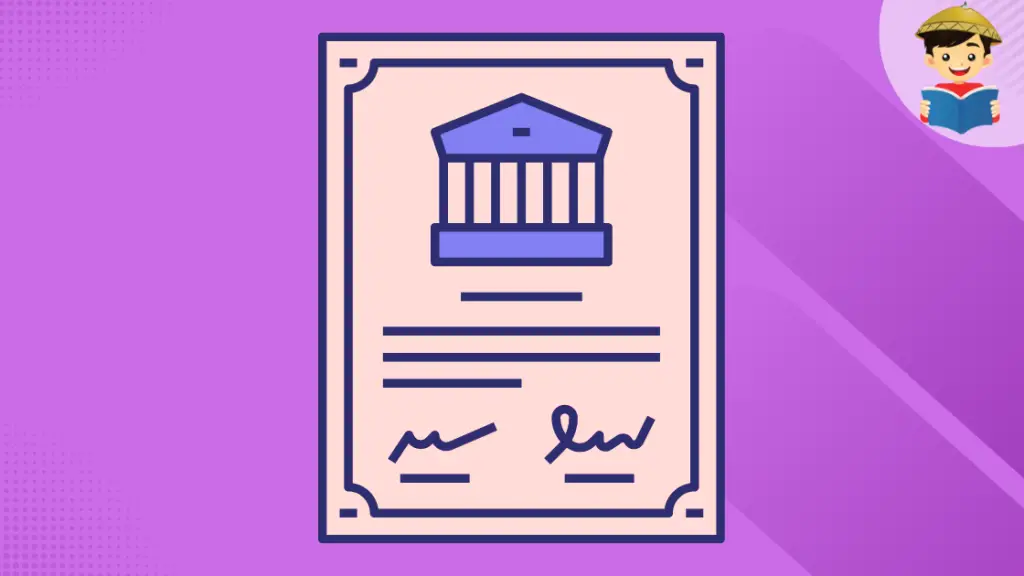
Treasury Bills (T-Bills), Retail Treasury Bonds (RTBs), and Fixed Treasury Notes (FXTNs) are fixed-income securities considered conservative and safe investments as the principal and interest are fully guaranteed by the Philippine Government. These are debt instruments used to finance government projects such as infrastructure, education, health care, etc.
Treasury bills are sold at a discount and can be redeemed at face value upon maturity. Retail Treasury Bonds and Fixed Treasury Notes pay out interests quarterly or semi-annually over the specified period, and the principal is repaid at the maturity date. Holders of these securities may also resell them before maturity to realize short-term interest gains.
Best for: Investing in these debt instruments is best for conservative investors who want to preserve their capital and earn more than regular savings accounts. It is also a good option for investors who want to diversify their portfolios and offset their riskier investments. The periodic repayments can also entice those looking for a recurring income.
Time Horizon: T-Bills have a short term of less than one year, while RTBs and FXTNs have medium to long terms of two to 25 years.
Risk Consideration: A rise in the country’s inflation rate reduces the value of bonds. Bonds also carry interest rate risk, wherein an increase in overall interest rates decreases bond prices.
Where to buy government bonds: Public offerings of government securities are announced through the Bureau of the Treasury website and printed in the business section of national newspapers. You can purchase them through the Government Securities Eligible Dealers11 such as banks or investment companies or through brokers in the secondary market. You can also buy directly through the online ordering facility via TreasuryDirect12 for as low as ₱5,000.
4. Corporate Bonds
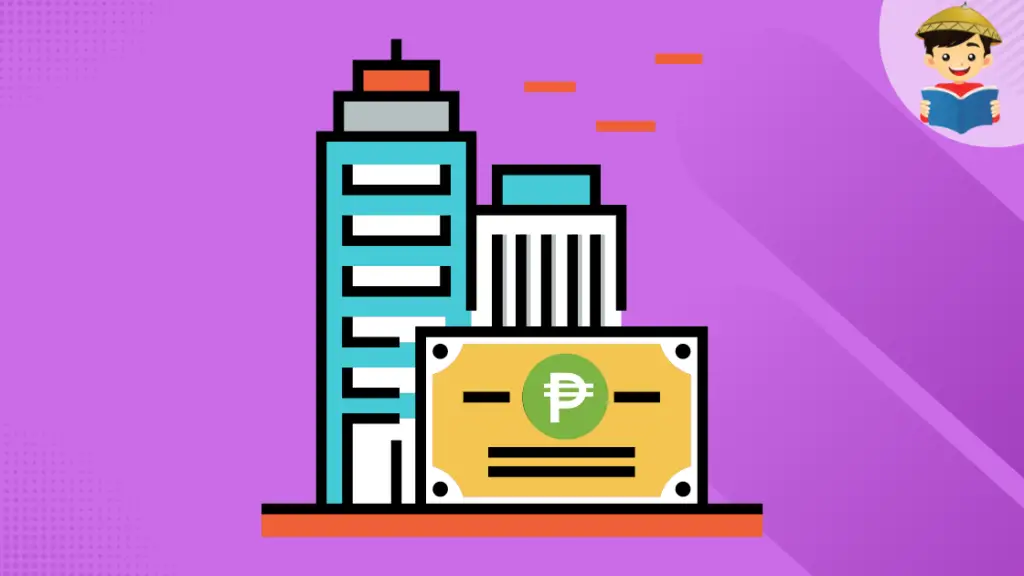
Similar to government agencies and the Bureau of the Treasury, firms listed in the local exchange can also issue corporate bonds to finance the expansion of their business or support their operations. Bondholders essentially lend money to the issuing company and will be given periodic coupon payments at either a fixed or variable interest rate until maturity. The coupon payment is computed as a percentage of the face value. Once it matures, the principal is returned to the investor.
Best for: Investors willing to take on some level of risk in exchange for a higher yield than government bonds may prefer corporate bonds. It is attractive for those who want predictable and recurring payments within a specified period.
Risk Consideration: Corporate bonds are only guaranteed by the issuing company. If the company declares bankruptcy, corporate bondholders are prioritized to be paid over stockholders, but it does not guarantee full payment and will depend on the firm’s total debt upon liquidation. Bonds that mature long term have the highest interest yields but also carry additional risks.
Time Horizon: Short-term, Medium-term, or Long-term
Where to buy: Most financial institutions have corporate bonds in their investment products. The minimum capital investment ranges from₱5,000 to ₱100,000, depending on the broker or dealer. You can also use the first electronic Securities Issue Portal (e-SIP)13 to make reservations for the bond issuances of corporations and submit documentation digitally.
5. Modified Pag-IBIG II (MP2)
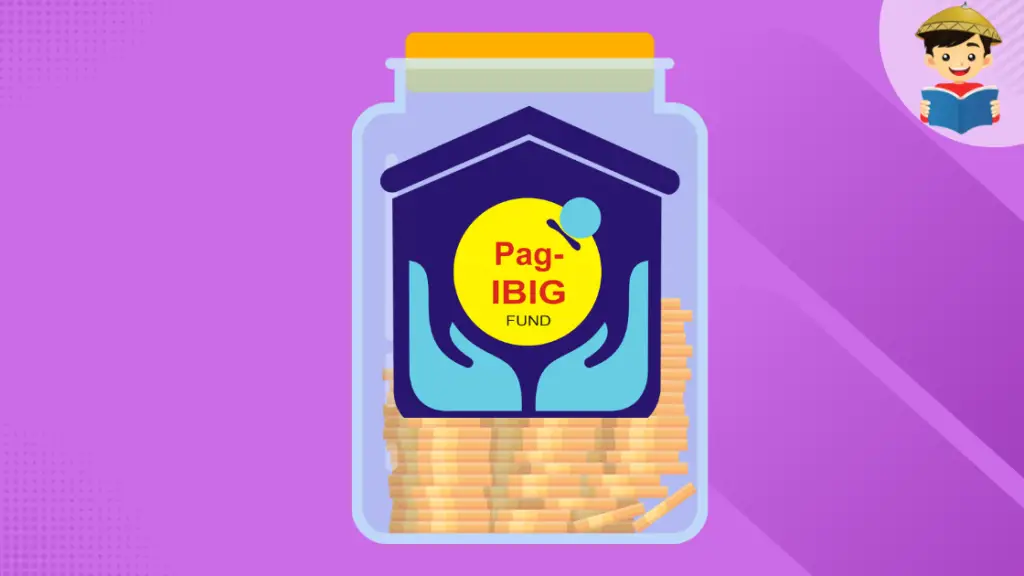
Modified Pag-IBIG II (MP2) is a special voluntary savings facility for active Pag-IBIG members who want to earn higher dividends than their regular Pag-IBIG savings. MP2 contributions are secured by the government, and the dividends are tax-free. It has a maturity of 5 years with an option to receive dividends annually or accumulate them at the end of five years with compounded earnings.
Best for: MP2 works well for employees saving for medium-term goals or preparing for retirement. All Pag-IBIG members, regardless of location, age, and monthly income, can open and invest in MP2, including former members such as retirees and pensioners with an equivalent of at least 24 monthly contributions before retirement.
Risk Consideration: MP2 annual dividend rates are not fixed and are based on the financial performance of the Home Development Mutual Fund (HDMF). If you wish to pre-terminate your account or withdraw the funds earlier than five years, you may do so without penalty under certain conditions. Otherwise, you may only get your contributions when you opted for annual dividends or keep 50% of your total dividends if you opted for the compounding of MP2 dividends.
Time Horizon: Medium-term
How to start investing in MP2: You can conveniently enroll in the MP2 savings program online through their digital platform. The minimum contribution is ₱500 with no maximum limit.
6. The Personal Equity and Savings Option (PESO)
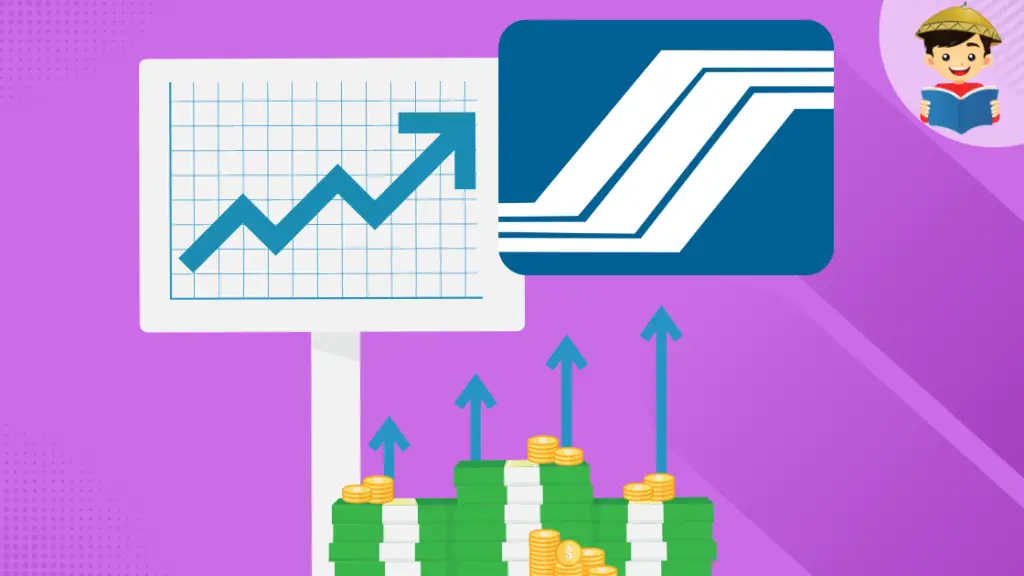
PESO is a voluntary provident fund for active Social Security System (SSS) members below 55 years of age. The contributions are allocated in government-backed securities and gain guaranteed tax-free earnings. Upon filing for retirement, SSS members will have the option to receive their PESO benefits as a lump sum, monthly pension, or a combination of both.
Best for: PESO is suitable for those who want a low-risk and passive investment to secure their retirement. All employees, self-employed, voluntary, and OFW members can participate in the program.
Risk Consideration: Since funds are invested in government securities, gains may be lower than other investment opportunities.
Time Horizon: Medium-term to Long-term
How to start investing: Eligible members may apply for the PESO fund program at any SSS branch. Each member can contribute between ₱1,000 to ₱500,000 per year.
7. Money Market Fund (MMF)

A money market fund is a type of mutual fund wherein money from different investors is pooled and invested in a portfolio of low-risk and short-term securities. It aims to preserve the principal and is managed by an investment company or professional fund managers.
Best for: MMFs are ideal for conservative or novice investors who want liquid investments while getting higher returns than savings accounts and time deposits. Some also use it to safely keep money temporarily while waiting for better investment opportunities.
Risk Consideration: While MMFs are extremely low-risk compared to other investment vehicles, they are not PDIC-insured and do not have guaranteed returns, unlike in savings accounts and time deposits. Trust fees and other management fees are also deducted from your account.
Time Horizon: Short-term
Where to buy MMFs: You can avail of MMFs through mutual fund companies14, Unit Investment Trust Funds (UITFs) providers15, Variable Universal Life (VUL) insurance companies16, and PERA product providers17.
8. Cooperatives

Members of Cooperatives must contribute a minimum amount to own shares and finance the group’s activities. Coops provide opportunities to grow your money through tax-free dividends and patronage refunds, in addition to the high-interest yield on the share capital. The higher your contribution and number of shares, the bigger your earnings are.
Best for: This is recommended for investors looking for tax-free earnings with recurring and generous cash dividends. There are a whole lot of other benefits you get from joining a Cooperative.
Risk Consideration: Incompetent management, corruption, and lack of capital are reasons for the failure of a Cooperative and your investment. There is also an increasing number of scammers in the guise of Cooperatives who recruit unsuspecting members and then run away with their hard-earned money. Make sure you do due diligence on the Cooperatives you wish to join.
Time Horizon: Short-term, Medium-term, or Long-term
How to join a Cooperative: The Cooperative Development Authority (CDA) keeps a masterlist18 of registered Cooperatives in the Philippines. Each one has eligibility requirements and documents needed to become a member. An initial fee and monthly contributions are required to remain an active member.
Best Investments in the Philippines for Moderate Investors
| Investment Product | Minimum Initial Capital | Average Return | Time Horizon |
| GInvest | ₱50 to ₱1,000 | 0.35%19 to 2%*20 | ST, MT, LT |
| Mutual Funds | ₱5,000 | depends on the type of fund21 | ST, MT, LT |
| Unit Investment Trust Fund (UITF) | ₱10,000 | 0.58% (YOY)220.4% (YTD)23 | ST, MT, LT |
| Personal Equity and Retirement Account (PERA) | ₱1,000 | 6.76%*24 | MT, LT |
| Life Insurance | ₱2,000 per month | 7.8% to 16.6%25 | LT |
1. GInvest

GInvest is a digital investment platform that provides an easy and affordable way to invest and grow your money. Money saved in your GCash can be used to build a diversified investment portfolio managed by ATRAM Trust Corporation and SeedBox Philippines. It provides a wide selection of investments from the local or global market, in various industries, and with low to high-risk levels.
Best for: GInvest is a good investment platform for those who wish to start investing but do not have enough funds to meet the typical minimum capital. It also provides a more convenient way to invest, especially for existing GCash users.
Risk Consideration: The principal and investment returns are not guaranteed and will depend on the performance of the market and chosen type of fund. Note that investing in low amounts translates to low yields.
Time Horizon: Short-term, Medium-term, or Long-term
How to start investing: Download the GCash app to access GInvest and start investing for as low as ₱50. Track and sell units of your investment conveniently through the GCash app.
2. Mutual Funds

Mutual funds are investment companies that pool money from investors to purchase stocks, bonds, equities, and other assets of varying risk levels. When you invest in a mutual fund, you do not directly own the stocks or securities but share in the profits or losses of the fund’s total holdings, depending on the number of shares you own. Earnings can come from dividend payments, capital gains, price per share, or the net asset value per share (NAVPS).
It is an inexpensive way for individuals to build a diversified portfolio with the help of professional fund managers. Some funds focus on a specific classification of investments, such as blue chip stocks or government securities. It aims to beat the market and provide higher returns than bank accounts.
Best for: Mutual funds are ideal for investors who want an affordable and convenient way to invest in multiple channels while dealing with a single entity.
Risk Consideration: Mutual funds have varied risk levels depending on the chosen investment vehicles. There is no guarantee against losses on investments made in mutual funds. Management fees and other additional costs are deducted from your earnings.
Time Horizon: Short-term, Medium-term, or Long-term
How to buy into mutual funds: There are a lot of mutual funds in the Philippines where you can invest. You have the option to buy directly from mutual fund companies or invest through banks, insurance firms, and online brokerage companies.
3. Unit Investment Trust Fund (UITF)

UITFs are like mutual funds where pooled funds are used to curate baskets of different types of investments managed professionally on behalf of the investors. Instead of shares in a mutual fund, investors buy units of investments that represent a portion of the investment fund. UITFs are offered by banks and managed by their Trust Group.
Best for: UITFs are well-suited for investors who want to invest passively in a diversified portfolio and would want to earn passive income through dividends.
Risk Consideration: Risks depend on the type of investments that make up the fund. The capital and returns are not guaranteed and may experience losses depending on the market conditions. The investment is also subject to trust fees and other costs.
Time Horizon: Short-term, Medium-term, or Long-term
Where to buy UITFs: Most commercial banks offer UITFs as part of their investment products.
4. Personal Equity and Retirement Account (PERA)
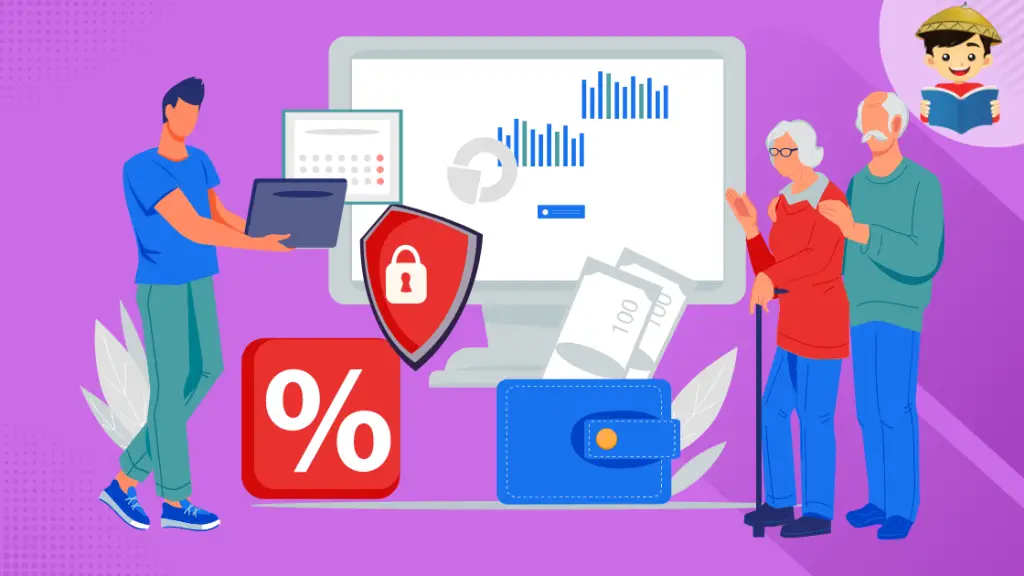
PERA is a provident personal savings and investment plan that aims to supplement the retirement benefits given by the government. Any person with the capacity to contract and has a Tax Identification Number (TIN) is eligible to open an account. They can choose which PERA-approved products to invest in, which range from moderate to high-risk investments.
PERA investments are exempt from withholding tax, estate taxes, and taxes on investment income. Contributors also receive an annual income tax credit of 5% of their contribution. PERA contributions and investment earnings can be claimed as a monthly pension or cash lump sum when the account holder reaches the age of 55.
Best for: PERA is best for working individuals 18 years old and above who want to save more for retirement and those who want the freedom to choose which products to invest their money in. Overseas Filipinos can also take advantage of this program as they can invest up to ₱200,000 per year in contrast with locals with a maximum limit of ₱100,000 with tax reliefs.
Risk Consideration: Returns from PERA are not secured and may incur losses depending on market price movements. PERA-approved investment options are riskier than the investment products for PESO. Early withdrawal may incur penalties, and all tax advantages received will be repaid to BIR.
Time Horizon: Medium-term to Long-term
How to start investing: You can conveniently enroll in PERA online through the approved PERA administrators26. The minimum contribution for PERA is ₱1,000. The legal spouse or child of Overseas Filipinos can also open an account for them.
5. Variable Universal Life Insurance (VUL)
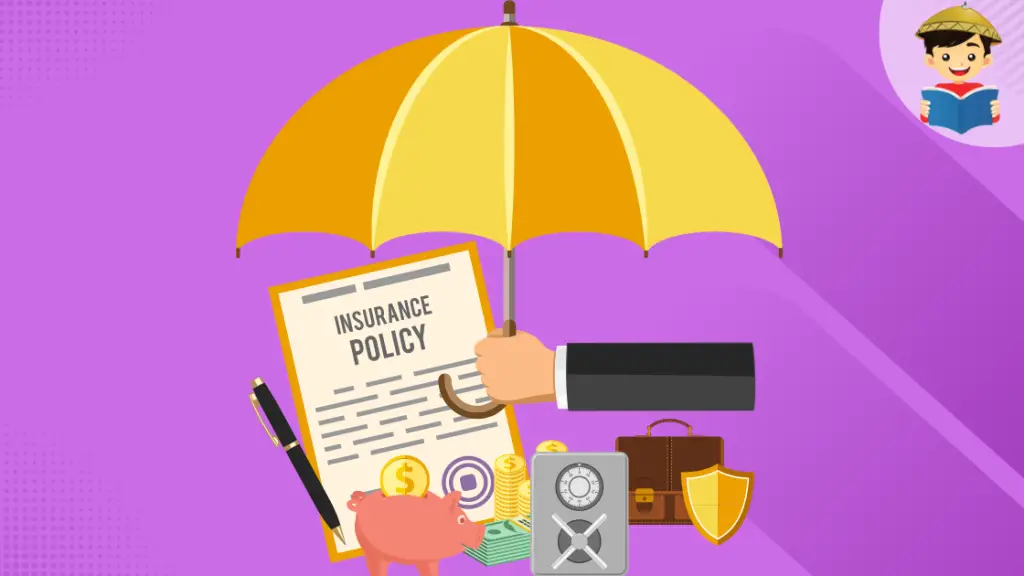
A Variable Universal Life or Variable Unit-Linked Insurance combines insurance and investment. A portion of your premium is allocated to insurance coverage while the rest to diverse financial instruments such as stocks, bonds, and index funds. These are managed by experienced and professional money managers, which give investors confidence in achieving high potential returns.
Earnings from the investments are put back into your account, thereby increasing your policy’s cash value over time. It can also be withdrawn or converted to premium payments. In case of death, the beneficiary will receive the insurance benefit and investment returns without paying the estate tax.
Best for: It is a good investment vehicle for those who want to give their family financial protection in case something unfortunate happens to them, and at the same time, having the potential to earn from their premium payments. Young investors can maximize this insurance product as they are usually given lower premiums than older individuals, and they have more time to let their money grow and accumulate.
Risk Consideration: The insurance company does not guarantee the rate of return on the investments and will depend on the performance of the chosen funds.
Time Horizon: Long-term
Where to buy: Reach out to the VUL insurance providers in the Philippines via their official website, financial advisors, and insurance agents.
Best Investments in the Philippines for Aggressive Investors
| Investment Product | Minimum Initial Capital | Average Return | Time Horizon |
| Stocks | ₱1,000 | 8.1%27 | ST, MT, LT |
| Real Estate | 20% of property value + leverage | 6% to 12%28 | LT |
| REITs | ₱5,000 | 2.82%29 | LT |
| Cryptocurrencies | $230 | 59%31 | ST, MT, LT |
| Alternative Investments | $4232 | 10.61%33 | LT |
| Business | ₱10,00034 | ROI depends on various factors | LT |
| Index Funds | ₱1,000 | Depends on the index it follows | LT |
| Exchange Traded Funds (ETF) | ₱1,000 | 4.48%35 | LT |
1. Stocks
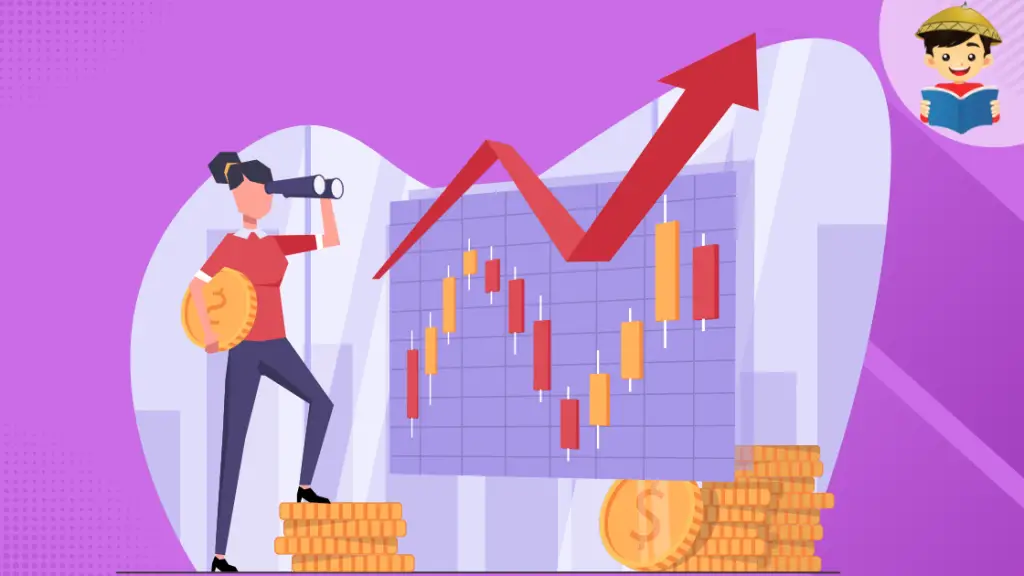
Buying stocks of a publicly listed company is a great opportunity for capital appreciation in the long term. Stock investing allows you to earn when you sell a stock that has appreciated since you bought it. You can also choose companies that regularly give dividends to stockholders for passive income. Some investors hold their stocks for a long time, while others perform active trading to lock in short-term gains.
Best for: Stock trading is best for experts and seasoned investors who can handle the losses from market volatility in the hopes of huge earnings in the long haul.
Risk Consideration: Stockholders may incur substantial losses due to large market price fluctuations. In addition, dividends from stocks are not guaranteed, and the amount will depend on the company’s financial performance and market conditions. You can manage the risks by diversifying your portfolio by investing in various stocks from multiple industries.
Time Horizon: Short-term for active traders and long-term for passive investors.
How to start investing: You can buy and sell stocks of companies listed on the Philippine Stock Exchange (PSE) through online stock trading platforms such as COL Financial and First Metro Securities. They also offer other investment options such as mutual funds, REITs, index funds, and UITF, where you can start investing for as low as ₱5,000. You can also work with a traditional brokerage firm that provides personal assistance and manages your portfolio. Note that this would entail additional costs and management fees.
2. Real Estate

Owning a real estate property is probably one of the first things that come to mind when you think about investing. It is because property value increases over time, and it gives you several opportunities for earning. Aside from appreciation, you can make money from real estate by leasing it for commercial or residential purposes depending on the location, making it a site of your business, creating a storage or parking space, or flipping houses. You can also use leverage through Pag-IBIG Fund or banks.
Best for: Investors with the resources to finance owning and maintaining a property are best suited for this investment. Those with knowledge in real estate management are also at an advantage.
Risk Considerations: Purchasing and maintaining real estate is costly. Aside from the market price, you need to factor in the construction, maintenance costs, and real estate taxes associated with the property before making an investment.
Time Horizon: Long-term
Where to buy: Real estate listings can be found in online marketplaces such as Lamudi, Ohmyhome, MyPropertyPH, PropertyFinder PH, etc. You can also look for foreclosed properties for sale in Foreclosure Philippines or on the website of most commercial banks.
3. Real Estate Investment Trust (REIT)

If you do not have enough funds to purchase a property, consider Real Estate Investment Trusts (REITs). They are publicly traded companies that own and manage real estate properties to generate profits.
Under Philippine law, REITs must distribute at least 90% of their taxable income to shareholders as dividends. REITs allow for diversification based on property types and have lower risks and higher returns. Investing in REITs is a more affordable alternative to owning a rental property.
Best for: REITs are ideal for investors looking for passive investment in the real estate sector without purchasing a property.
Risk Considerations: The prices of REITs are affected by the company’s performance, market conditions, and economic outlook, much like stocks. Threats associated specifically with real estates, such as property taxes, will have a direct impact on its overall performance, unlike a portfolio of stocks from various industries.
Time Horizon: Long-term
Where to buy: During a REIT’s initial public offering (IPO), you can make a subscription via the PSE Easy platform. After the IPO period, you can trade REITs through the PSE-accredited brokers’36 digital platforms.
4. Cryptocurrencies
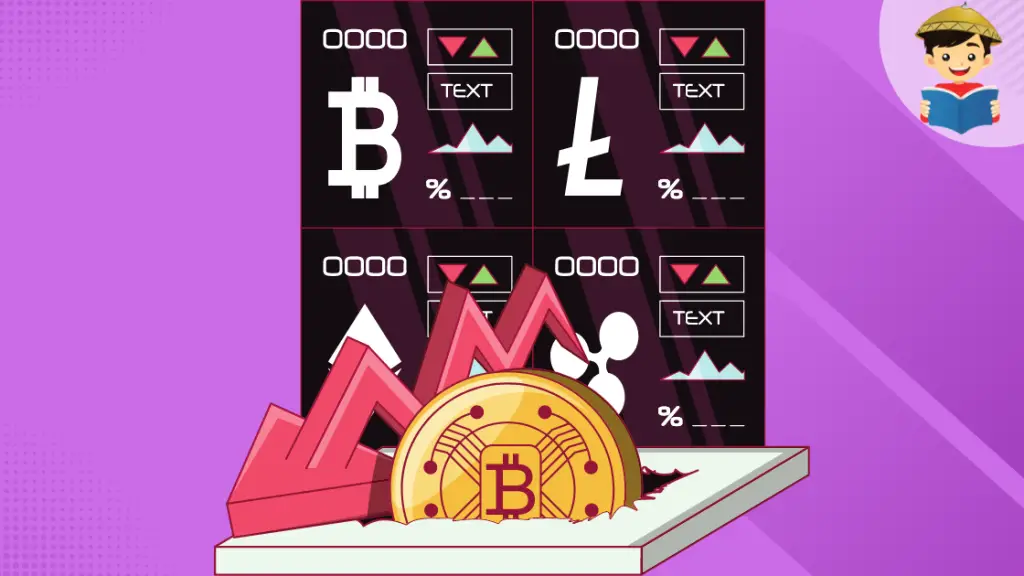
Holding or trading cryptocurrencies is arguably the most volatile investment instrument today. There are crypto investors who amassed a huge amount of money in just a few months. At the same time, there are stories about people losing all of their savings and getting into debt by investing in crypto. Make sure you research and review the currency’s white paper before investing to understand its purpose and the technology behind it.
The value of digital coins is determined by their scarcity and demand from the community. As more and more institutions accept crypto as an exchange medium, more investors are drawn in, and its value shoots up. Due to its erratic fluctuations and lack of regulation, you may gain higher yields when you do active trading.
Best for: Cryptocurrency is a good investment for enthusiasts who also use it in their transactions. Some aggressive investors may also find its wild price fluctuations attractive.
Risk Consideration: Cryptocurrency has greater volatility than stocks. It is not backed by any government, unlike paper currency, and its value may change substantially within just a few hours. Uninformed investors are targeted by scammers who promise guaranteed returns from investing in crypto. Your virtual wallet is also prone to hacking, so you must employ additional security measures to protect your account.
Time Horizon: Short-term, Medium-term, or Long-term
How to invest in Crypto: You can buy and sell cryptocurrencies by signing up with a cryptocurrency exchange like PDAX, Binance, and Coins.ph Simply go to their website or download their mobile app to register. You can fund your digital wallet through bank transfers, e-wallet apps, and other crypto exchanges.
5. Alternative Assets

Purchasing gold, art paintings, antiques, and other collectibles with the hope of gaining substantial growth in value in the future are categorized as alternative investments. Some of these alternative assets are not influenced by market conditions which makes them attractive investments. However, some collectors purchase and keep these items in the possession of their family and pass them on to the next generations with no intention to sell or trade them.
Best for: Art enthusiasts and collectors with the expertise and experience to assess the quality and authenticity of these assets are best suited to explore this kind of investment.
Risk Consideration: These are highly illiquid assets and are not easily traded in the market compared to stocks. They have high acquisition and maintenance costs. You do not reap the benefits from value appreciation until the asset is sold. There is also the risk of acquiring counterfeit items or losing their value when damaged.
Time Horizon: Long-term
Where to buy: Antique shops, art auction houses, trusted gold jewelry suppliers, etc. Ensure you only deal with legit suppliers and that documents are provided to prove that items are genuine.
6. Business

With fast-paced technology and more accessible capital resources, starting a business is now easier and more affordable. Franchise arrangements are offered by companies to drive expansion and growth. An equity partnership in private businesses allows investors to share in the profit and losses of the venture without necessarily taking an active role in its management and operations.
Best for: Franchising or equity partnership is ideal for business-minded individuals who do not have the time and capital to put up their business from scratch.
Risk Consideration: Success is not guaranteed, and it may take several months or years before you reach your return on investment.
Time Horizon: Long-term
How to invest in a business: Franchising, equity partnerships, and other investment opportunities are usually announced by firms or business owners through their official websites or social media pages.
7. Index Fund

An Index fund is a type of mutual fund that tracks and matches the risk and return of a particular financial market index, such as the Philippine Stock Exchange Index (PSEi) and S&P 500. An investor can earn money when the value of the index fund units increases over time or through dividend payments. It is a long-term passive income-generating asset that has lower fees compared to funds that are actively managed.
Best for: An index fund is an ideal investment for young investors saving for retirement and who intend to keep their money invested for more than 10 years.
Risk Consideration: Index funds are exposed to the same risks as the market index they follow. When the share price of a particular firm shoots up, the returns may not be fully realized as there are other stocks that may impact the overall performance of the fund. This is a drawback compared to directly owning these shares of stocks. On the flip side, the diversification of these funds dampens the losses when the price of a single or few stocks drops.
Time Horizon: Long-term
How to invest: Index funds are typically invested by opening an investment account through mutual fund companies, UITFs, or PERA. You can also invest in index funds tracking foreign stock markets through an index feeder fund.
8. Exchange Traded Fund (ETF)

An ETF is similar in principle to index funds in that it follows the composition and performance of a particular index or sector. It is evaluated regularly and adjusted accordingly to best fit its target collection of investments. The main difference is that ETFs can be bought or sold throughout the stock market trading hours, while index funds can only be traded at the end of the day after the market closes.
First Metro Exchange Traded Fund (FMETF) is the first and only ETF available in the PSE. FMETF is set to benchmark against the performance of the Philippine Stock Market by investing in the companies comprising the Philippine Stock Exchange Index (PSEi).
Best for: Investors with long-term savings goals can maximize the potential gains from ETFs. It has lower minimum capital compared to mutual funds.
Risk Consideration: Similar to index funds, ETFs are exposed to the risks associated with the underlying assets it tracks but is minimized through diversification.
Time Horizon: Long-term
How to invest: You can trade FMETF in the PSE through online stock broker platforms. For international ETFs, you can invest through index feeder funds offered by banks or via global investment platforms offering ETFs like eToro and Vanguard.
How To Choose the Right Investment for You
Regardless of your stage in life, you can find an investment outlet that is suited to your current needs and situation. The right investment for you should serve your goals, match your resources, and reflect your risk profile.
1. Objective
Investing with a goal gives you purpose and motivation to look for the best investment and keep investing. How much do you need to achieve your goal? Is it a big purchase with a single or recurring payment? Do you have a specific amount you want to reach, or do you just want to save as much as possible? These factors set your target and expectation of your potential investment vehicle.
2. Time Horizon
What is the time frame you intend to achieve your goal and therefore reap the rewards of your investment? This determines the degree of liquidity and time horizon of your investment. You can opt for investments with short-term maturity or assets that can be easily converted to cash or invest in highly illiquid assets such as real estate, collectibles, or long-term bonds.
3. Budget
Determine the amount you plan to invest based on your financial capacity. Take into account the amount you earn, daily expenses, savings, and other projects you are currently working on. Make sure you have money set aside for emergencies and unforeseen circumstances to avoid pulling out funds from your investments prematurely. Decide if you can invest money once or prefer to contribute regularly to an investment vehicle.
4. Resources
Do you have the time and knowledge to monitor your investments or take an active role in trading or looking for profitable assets? Are you willing to learn and build expertise on handling your investments? Or would you rather have someone manage your portfolio? Evaluate your resources to decide if you can earn more by doing it yourself or if it is more beneficial to hire professional managers but with additional costs.
5. Risk Profile
It is important that your investments reflect your risk profile as this will set your expectations and help you avoid making emotional decisions during a crisis. There are sample questionnaires available online to assess your risk tolerance. Financial advisors can also guide you in determining your risk appetite.
How To Start Investing
1. Invest Now
There is no better time to start your investment journey than today. Maximize the power of compounding interest by investing as soon as you can. You can start with low-risk, stable, and short-term investments while still looking for the ideal asset or holding. A small amount invested today will go a long way and may be worth more than a larger amount invested 10 years later.
2. Understand Your Investment
Take the time to learn how the investment product works, the factors affecting its value, the risks and costs associated with it, and potential gains.
If you are interested in mutual funds, research the available options. For index funds and ETFs, decide which specific index you are interested in following. If you want to invest in stocks, would you prefer owning shares of blue chip companies, or are you inclined to buy an IPO? Remember to spread your investments across various industries to minimize risks.
3. Choose Your Provider and Open an Account
If you have a particular investment in mind, there are plenty of ways and places to invest in it. Evaluate these options based on historical performance, average returns, and fees.
Another way to choose a provider is to choose the ones you are currently working with. Your trusted bank may be offering the investment products you are interested in. Opening an investment account might be easier and faster since you are already an existing client of theirs.
4. Review Your Portfolio Regularly
Your investment journey doesn’t end in transferring funds or acquiring assets. You should monitor and check if the performance of your holdings is still aligned with your objectives. Discuss with your fund manager if you have any shift in goals, risk appetite, or investment capacity, and work out new strategies if needed. If you are investing independently, you may look for better opportunities or devise a new game plan.
Tips and Warnings
- Only invest what you can afford to lose. This is equivalent to saying that your investments should match your risk profile and financial capacity. Do not put in money allocated for your daily expenses or necessities. Investments are meant to protect and grow your money and not the other way around.
- Take advantage of employee benefits. Some employers may sponsor a retirement plan, health insurance, or match your contribution to savings plans. You may be eligible to be a member of the Cooperative in your company. Make sure you avail of these privileges for additional savings and investment opportunities.
- Diversify your portfolio. The easiest way to mitigate risks and losses is to spread your money across multiple stocks, sectors, and investment instruments.
Frequently Asked Questions
1. Which should come first: investment, emergency fund, or paying off debts?
Prioritize paying off your debts and building an emergency fund before investing. Interests on your high-interest debts may eat up the earnings from your investments, so it is best to settle them as soon as you can. When you invest without an emergency fund, and an unexpected incident occurs, you may be forced to withdraw your investments prematurely without reaching your target earnings. You may also incur early withdrawal penalties and end up losing money.
2. Do I have to be debt-free and maintain a fully-funded emergency fund before I can start investing?
It is an ideal situation but is not mandatory. However, with your emergency fund as a safety net and having no debt payments, you can maximize the growth of your invested money and reach your financial goals faster.
3. How do I start investing if I do not have enough funds?
Review your expenses and follow a tighter budget. Make sure you can cover your basic needs, save up for emergencies, and repay your debts. You can invest the extra money left after taking these into account. If this is not possible, consider looking for other sources of income to earn more so you can save and invest.
4. What is the best investment option for beginners?
You can start with accessible and stable investments such as a high-yield savings account or time deposit. You can also enroll in MP2 to get in the habit of saving and investing. For riskier investments, opt for mutual funds or index funds that provide a diversified portfolio and are handled by fund managers.
5. Is there a preferred time or day to trade in the market?
If you are investing for the long-term, the time or day of trading doesn’t have a significant impact on your total investment. What matters more is how much and how often you invest. On the other hand, active traders may benefit more in timing the market.
References
- City Bank Peso Bonus Saver Account. Retrieved 23 August 2022, from https://www.citibank.com.ph/personal-banking/deposits/savings-account/bonus-saver/
- Stashes. Retrieved 23 August 2022, from https://tonikbank.com/savings-cards/stashes
- Peso Time Deposit. Retrieved 23 August 2022, from https://www.bdo.com.ph/personal/accounts/time-deposit/peso-time-deposit
- Peso Time Deposit. Retrieved 23 August 2022, from https://www.securitybank.com/personal/accounts/time-deposit/peso/
- Time Deposit. Retrieved 23 August 2022, from https://tonikbank.com/savings-cards/time-deposit
- Bureau of the Treasury. Retrieved 23 August 2022, from https://www.treasury.gov.ph/?page_id=12658
- S&P Philippines Corporate Bond Index. (2022). Retrieved 23 August 2022, from https://www.spglobal.com/spdji/en/indices/fixed-income/sp-philippines-corporate-bond-index/#overview
- MP2 (Modified Pag-IBIG II) Savings. Retrieved 23 August 2022, from https://www.pagibigfund.gov.ph/Membership_ModifiedPagIBIG2.html
- SSS Peso Fund. Retrieved 23 August 2022, from https://www.sss.gov.ph/sss/DownloadContent?fileName=PESO_Fund_FAQs.pdf
- Philippines Money Market Rate. (2022). Retrieved 23 August 2022, from https://www.economy.com/philippines/money-market-rate
- Primary Dealers (GSEDS). (2021). Retrieved 22 August 2022, from https://www.treasury.gov.ph/?page_id=141
- Individual. Retrieved 22 August 2022, from https://www.treasurydirect.gov/indiv/myaccount/myaccount_treasurydirect.htm
- Electronic Securities Issue Portal to pave way for digitalization of Philippine capital markets. (2021). Retrieved 22 August 2022, from https://www.dof.gov.ph/electronic-securities-issue-portal-to-pave-way-for-digitalization-of-philippine-capital-markets/
- List of Registered Investment Companies. (2022). Retrieved 22 August 2022, from https://www.sec.gov.ph/investment-companies/list-of-registered-investment-companies/
- Fund Providers. Retrieved 22 August 2022, from https://www.uitf.com.ph/fund-providers.php
- Department of Finance. (2022). List of Insurance Companies with Valid and Existing Certificate of Authority. Retrieved from https://www.insurance.gov.ph/life-and-non-life-companies/
- Inclusive Finance – PERA. (2021). Retrieved 22 August 2022, from https://www.bsp.gov.ph/Pages/InclusiveFinance/PERA_Participants.aspx
- Cooperative Development Authority. (2018). Registered Cooperatives. Retrieved from https://cda.gov.ph/wp-content/uploads/2020/12/Masterlist_Asof_2018Dec31.pdf
- ATRAM Peso Money Market Fund. (2022). Retrieved 22 August 2022, from https://www.atram.com.ph/funds/selector/ATRPHMM
- ATRAM Total Return Peso Bond Fund. (2022). Retrieved 22 August 2022, from https://www.atram.com.ph/funds/selector/ATRPHFI
- NAVPS Performance. (2022). Retrieved 22 August 2022, from https://www.pifa.com.ph/factsfignavps.asp
- Returns & Performance. (2022). Retrieved 22 August 2022, from https://www.uitf.com.ph/top-funds.php?verification_id=2002187154&class_id=4¤cy=PHP&radio1=yoy&fromdate=&todate=&btn=FILTER
- Returns & Performance. (2022). Retrieved 22 August 2022, from https://www.uitf.com.ph/top-funds.php?verification_id=1003444617&class_id=4¤cy=PHP&radio1=ytd&fromdate=&todate=&btn=FILTER
- Bank of the Philippine Islands (BPI). (2020). BPI makes saving for retirement easier through BPI PERA. Retrieved from https://www.bpi.com.ph/bpi/newsroom-articles/2020/bpi-pera
- 3 benefits of a VUL insurance plan. (2017). Retrieved 22 August 2022, from https://www.sunlife.com.ph/en/insurance/bright-ideas/3-benefits-of-a-vul-insurance-plan/#:~:text=Since%20its%20inception%2C%20the%20average,Life%27s%20Variable%20Life%20Insurance%20Products.
- Bangko Sentral ng Pilipinas (BSP). (2021). Frequently Asked Questions: Personal Requirement Equity Account (PERA) [Ebook] (pp. 1-16). Retrieved from https://www.bsp.gov.ph/Media_And_Research/Primers%20Faqs/FAQ%20-%20PERA%20(as%20of%2031%20July%202021).pdf.
- Cruz, E. Is Peso-Cost Averaging Really Effective?. Retrieved 22 August 2022, from https://investment.fwd.com.ph/experts/is-peso-cost-averaging-really-effective
- Lot for Sale. Retrieved 22 August 2022, from https://www.lamudi.com.ph/land/buy/
- Stock vs. Real Estate. Retrieved 22 August 2022, from https://www.bdo.com.ph/securities/reits-stocks-versus-real-estate#:~:text=Because%20REITs%20must%20distribute%20income,average%20dividend%20yield%20of%202.82%25.
- What is the minimum amount of cryptocurrency that I can purchase?. Retrieved 23 August 2022, from https://help.coinbase.com/en/coinbase/trading-and-funding/buying-selling-or-converting-crypto/what-is-the-minimum-amount-of-cryptocurrency-that-i-can-purchase
- Bitcoin Historical Annual Returns (10 Years, 5 Years, 3 Years, 1 Year). (2022). Retrieved 22 August 2022, from https://www.goodfinancialcents.com/bitcoin-annual-returns/
- Gold Rate Today in Philippines. (2022). Retrieved 23 August 2022, from https://www.worldforexrates.com/xau/php/1-exchange-rate/
- Average annual return of gold and other assets worldwide from 1971 to 2019. (2019). Retrieved 22 August 2022, from https://www.statista.com/statistics/1061434/gold-other-assets-average-annual-returns-global/#:~:text=The%20annual%20average%20return%20of,silver%20which%20had%20the%20highest.
- List of food cart franchises. Retrieved 23 August 2022, from https://www.franchisemarket.ph/food-cart-franchise-philippines?franchise_industry=2&franchise_category=3&franchise_fee=1&investment_level=0&location=0&keywords=#
- First Metro Philippine Equity Exchange Traded Fund Inc. (2022). Retrieved 22 August 2022, from https://www.bloomberg.com/quote/FMETF:PM
- Online REIT Brokers. (2020). Retrieved 23 August 2022, from https://www.reitphilippines.com/online-reit-brokers/
Moanna Santos, MBA
Moanna Santos holds a Master’s degree in Business Administration (MBA) from the University of the Philippines – Diliman where she took elective courses in Risk Management, Asian Business, Consumer Behavior, and Business Ethics. She has 3 years of experience in Procurement in the Food and Beverage Industry. A first-time mom who is constantly amazed by her toddler, she hopes to inspire others by sharing her knowledge.
Copyright Notice
All materials contained on this site are protected by the Republic of the Philippines copyright law and may not be reproduced, distributed, transmitted, displayed, published, or broadcast without the prior written permission of filipiknow.net or in the case of third party materials, the owner of that content. You may not alter or remove any trademark, copyright, or other notice from copies of the content. Be warned that we have already reported and helped terminate several websites and YouTube channels for blatantly stealing our content. If you wish to use filipiknow.net content for commercial purposes, such as for content syndication, etc., please contact us at legal(at)filipiknow(dot)net
